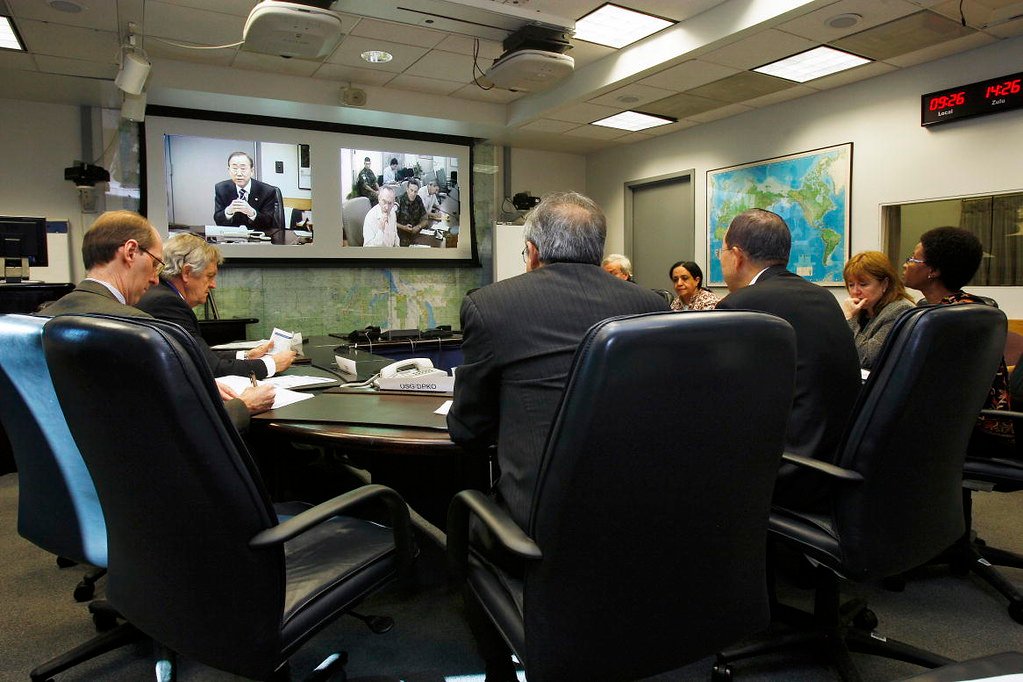Businesses and organizations are producing and managing an unprecedented amount of content in today’s digital age. From marketing materials and product documentation to blog posts and customer support articles, the need for a centralized and efficient content repository has become more critical than ever. A well-organized and easily searchable content repository not only saves time and effort but also ensures that the right information is accessible to the right people at the right time.
In this blog post, we will explore the process of building and managing an efficient content repository. We will start by understanding what a content repository is and why it is important for businesses. Then, we will delve into the step-by-step process of building a content repository, including identifying the type of content, choosing the right platform for storage, and creating an effective content organization structure.
Once the content repository is built, managing it becomes equally important. We will discuss best practices for managing the content repository, such as regularly updating the content, organizing it for easy retrieval, implementing access control, and conducting regular audits to remove outdated or irrelevant content.
To further optimize the efficiency of the content repository, we will explore techniques such as using metadata and content tagging, implementing advanced search functionalities, leveraging artificial intelligence for content curation, and ensuring scalability of the repository.
To provide real-world examples, we will showcase case studies of successful implementations of content repositories in various industries. These case studies will highlight the benefits and challenges faced during the implementation process.
Finally, we will conclude by discussing the future of content repositories and how emerging technologies and trends will shape their evolution. Whether you are a content creator, manager, or business owner, this blog post will provide you with valuable insights and practical tips for building and managing an efficient content repository to support your organization’s content needs. So, let’s dive in and explore the world of content repositories!
Understanding Content Repository: Definition and Importance
A content repository is a centralized and organized storage system for all types of digital content, including documents, images, videos, audio files, and more. It serves as a single source of truth for content within an organization, allowing easy access, retrieval, and management of information.
The importance of a content repository cannot be overstated. Here are some key reasons why businesses and organizations should invest in building and managing an efficient content repository:
-
-
- Centralization: A content repository provides a centralized location for storing and managing all content assets. Instead of scattered files and folders across various systems, a content repository brings everything together in one place, making it easier to locate and access content.
- Organization: With a content repository, content can be organized in a structured manner, using folders, categories, and metadata. This organization allows for efficient content retrieval and eliminates the chaos of searching through multiple locations for specific information.
- Version Control: Content repositories often include version control functionality, enabling users to track and manage different versions of content. This ensures that the most up-to-date and accurate information is available to users, eliminating the risk of outdated or conflicting content being accessed or shared.
- Collaboration: Content repositories facilitate collaboration among team members by providing a central platform where multiple users can access and contribute to content. This promotes teamwork, streamlines workflows, and reduces duplication of efforts.
- Security: A content repository allows for better security and access control over sensitive content. Permissions can be set to restrict access to certain individuals or groups, ensuring that confidential information remains protected.
- Compliance: For industries that have strict compliance requirements, a content repository can help ensure adherence to regulations. It provides a platform to store and manage content in a compliant manner, with features like audit trails and retention policies.
- Efficiency and Productivity: By having a well-organized content repository, employees can quickly find and retrieve the information they need, reducing time wasted searching for content. This improves overall efficiency and productivity within the organization.
-
Understanding the definition and importance of a content repository sets the foundation for building and managing an efficient system. In the following sections, we will explore the step-by-step process of building a content repository, best practices for managing it, techniques for optimization, and real-world case studies of successful implementations.
Building a Content Repository: Step-by-step process
Building a content repository requires careful planning and implementation. In this section, we will outline a step-by-step process to guide you through the creation of an efficient content repository.
1. Identifying the type of content
Before building a content repository, it is crucial to identify the types of content that will be stored. This includes documents, images, videos, audio files, and any other relevant file formats. Consider the specific needs of your organization and the types of content that are frequently created and accessed.
2. Choosing the right platform for content storage
Selecting the appropriate platform for storing your content is essential. There are several options available, including cloud-based solutions, on-premises servers, or a combination of both. Consider factors such as security, scalability, accessibility, and budget when making this decision.
3. Creating a content organization structure
Developing a well-defined content organization structure is key to ensuring easy navigation and retrieval of content. Determine how you will categorize and organize your content, such as by department, project, topic, or any other relevant criteria. This structure will serve as the backbone of your content repository, so take the time to plan it carefully.
4. Implementing the Content Repository
Once you have identified your content types, chosen a storage platform, and created an organization structure, it’s time to implement the content repository. This involves setting up the chosen platform, configuring access controls and permissions, creating the necessary folders and categories, and establishing metadata standards. Ensure that the implementation aligns with your organization’s specific requirements and workflows.
5. Migrating and populating the repository
If you already have existing content scattered across various systems, a crucial step is to migrate and populate the content repository. This involves transferring content from its current location to the newly implemented repository, ensuring that it is properly categorized, tagged, and organized. Take the opportunity to clean up any redundant or outdated content during this process.
By following these steps, you can build a solid foundation for your content repository. In the next section, we will explore best practices for managing the repository once it is established, ensuring that it remains efficient and effective in the long run.
Managing the Content Repository: Best practices
Once you have built a content repository, it is vital to implement effective management practices to ensure its ongoing efficiency and usability. In this section, we will discuss some best practices for managing your content repository.
1. Regularly updating the content
Content is dynamic and constantly evolving. It is crucial to establish a process for regularly updating and maintaining your content repository. This includes reviewing existing content for accuracy, relevance, and freshness. Consider implementing a content review schedule to ensure that outdated or inaccurate information is promptly removed or updated.
2. Organizing content for easy retrieval
A well-organized content repository is key to efficient content retrieval. Utilize the organization structure you created during the building phase to categorize and label content appropriately. Implement a consistent naming convention and metadata tagging system to make content easily searchable. Consider using descriptive keywords and relevant tags to enhance the discoverability of your content.
3. Implementing access control
Controlling access to your content repository is essential for security and confidentiality. Establish user roles and permissions, granting access only to authorized individuals or groups. This ensures that sensitive information is protected and prevents unauthorized modifications or deletions. Regularly review and update access control settings to reflect changes in personnel or organizational structure.
4. Conducting regular audits for outdated or irrelevant content
Performing regular content audits is crucial to maintaining a clean and relevant content repository. Conduct periodic reviews to identify and remove outdated, redundant, or irrelevant content. Evaluate content usage metrics, user feedback, and business goals to determine which content should be retained or removed. This practice helps keep your repository streamlined and ensures that users can find the most up-to-date and valuable information.
5. Implementing backup and disaster recovery plans
To safeguard your content repository from potential data loss or system failures, it is essential to implement robust backup and disaster recovery plans. Regularly back up your content repository to a secure location or utilize cloud-based backup services. Test the restoration process periodically to ensure data integrity and availability in the event of a disaster or system failure.
By following these best practices, you can effectively manage your content repository, ensuring its ongoing usability and value. In the next section, we will explore techniques for optimizing your content repository, allowing for enhanced search capabilities and scalability.
Efficient Content Repository: Techniques for optimization
To optimize your content repository and enhance its efficiency, there are several techniques and strategies that you can implement. In this section, we will explore some key techniques for optimizing your content repository.
1. Using metadata and content tagging
Metadata and content tagging play a crucial role in improving the searchability and discoverability of your content repository. Implement a consistent and standardized metadata schema that includes relevant information such as author, date, keywords, and categories. Leverage content tagging to further enhance search capabilities and allow for more precise filtering and categorization of content.
2. Implementing advanced search functionalities
Enhance the search functionality of your content repository by implementing advanced search capabilities. Utilize features such as full-text search, faceted search, and Boolean operators to enable users to perform more specific and targeted searches. Consider integrating search functionalities that support natural language processing and machine learning algorithms for more accurate and personalized search results.
3. Leveraging AI for content curation
Artificial intelligence (AI) technologies can greatly assist in content curation and recommendation. Implement AI-powered content recommendation systems that analyze user behavior, preferences, and content metadata to suggest relevant and personalized content to users. This not only improves user experience but also increases engagement and promotes the discovery of valuable content.
4. Ensuring scalability of the repository
As your organization grows and content volumes increase, it is crucial to ensure the scalability of your content repository. Choose a platform that can handle large volumes of content and user traffic without compromising performance. Consider utilizing cloud-based solutions that offer scalability and flexibility in storage and processing capabilities. Regularly monitor and optimize the performance of your content repository to accommodate growth and maintain optimal user experience.
5. Implementing content lifecycle management
Content lifecycle management involves managing content from creation to retirement. Implement a comprehensive content lifecycle management strategy that includes processes for content creation, review, approval, publication, and archival. This ensures that content remains relevant and up-to-date throughout its lifecycle and prevents the accumulation of outdated or redundant content in your repository.
By implementing these optimization techniques, you can enhance the efficiency and usability of your content repository, enabling users to find and utilize content more effectively. In the next section, we will explore real-world case studies of successful implementations of content repositories to provide practical insights and inspiration.
Case Studies: Successful Implementation of Content Repositories
To gain practical insights and inspiration, let’s explore some real-world case studies of successful implementations of content repositories. These case studies highlight the benefits, challenges, and strategies utilized by organizations in building and managing efficient content repositories.
Case Study 1: Company XYZ – Streamlining Knowledge Management
Company XYZ, a multinational technology company, faced challenges with scattered and disorganized knowledge management. They implemented a content repository that centralized all their product documentation, technical resources, and customer support articles. By utilizing metadata tagging and advanced search functionalities, employees and customers could easily find the information they needed, resulting in improved productivity and customer satisfaction.
Case Study 2: Organization ABC – Compliance and Security Enhancement
Organization ABC, a financial institution, implemented a content repository to enhance compliance and security. By utilizing access controls and permissions, they ensured that sensitive financial information was restricted to authorized personnel. Regular audits and content lifecycle management practices were implemented to maintain compliance with industry regulations. As a result, Organization ABC achieved improved data security, streamlined compliance processes, and reduced risks.
Case Study 3: Startup XYZ – Scalability and Collaboration
Startup XYZ, a rapidly growing software development company, needed a content repository to support their expanding team and collaboration efforts. They opted for a cloud-based solution that offered scalability and real-time collaboration features. Through effective content organization, version control, and access management, the team could collaborate seamlessly on projects, resulting in increased productivity and efficient knowledge sharing.
Case Study 4: Organization XYZ – AI-Powered Content Curation
Organization XYZ, a media and entertainment company, implemented an AI-powered content repository to curate and recommend personalized content to their audience. By leveraging AI algorithms that analyzed user preferences and content metadata, they provided tailored content recommendations, resulting in increased engagement, longer user sessions, and improved user satisfaction.
These case studies demonstrate the diverse benefits and successful implementations of content repositories across different industries. By studying these real-world examples, you can gain valuable insights into the strategies and best practices employed by organizations to achieve efficient and effective content management.
In the next section, we will conclude our blog post by discussing the future of content repositories and how emerging technologies will shape their evolution.
Conclusion: The Future of Content Repositories
As we conclude our exploration of building and managing an efficient content repository, it is important to consider the future of this essential tool in the digital landscape. The advancements in technology and evolving content management needs will shape the future of content repositories in several ways.
-
-
- Artificial Intelligence and Machine Learning: AI and machine learning technologies will play a significant role in content repositories. These technologies will enable more advanced content curation, personalized recommendations, and automated content tagging. AI-powered chatbots and virtual assistants may also be integrated into content repositories to enhance user interactions and provide instant access to relevant information.
- Semantic Search and Natural Language Processing: Semantic search and natural language processing capabilities will continue to evolve, enabling more accurate and context-aware search results within content repositories. This will enhance the user experience and improve content discoverability.
- Integration with Collaboration Tools: Content repositories will become more integrated with collaboration tools, allowing seamless content creation, editing, and sharing among team members. Real-time collaboration features will enable teams to work simultaneously on content, fostering productivity and teamwork.
- Mobile Accessibility: With the increasing use of mobile devices, content repositories will need to be optimized for mobile accessibility. Mobile apps and responsive design will enable users to access and interact with content repositories on the go, ensuring flexibility and convenience.
- Data Analytics and Insights: Content repositories will leverage data analytics to provide valuable insights into content usage, engagement, and performance. This will enable organizations to make data-driven decisions, identify content gaps, and optimize their content strategies.
- Integration with External Systems: Content repositories will be more integrated with external systems such as customer relationship management (CRM) platforms, marketing automation tools, and learning management systems (LMS). This integration will enable seamless content distribution, personalized customer experiences, and enhanced training and development initiatives.
-
As technology continues to evolve, content repositories will adapt and evolve alongside them. Organizations that embrace these advancements and adopt modern content management practices will gain a competitive edge by efficiently harnessing the power of their valuable content assets.
In conclusion, building and managing an efficient content repository is crucial for organizations to effectively store, organize, and distribute their content. By following the step-by-step process, implementing best practices, optimizing through advanced techniques, and drawing inspiration from successful case studies, you can create a content repository that maximizes productivity, improves collaboration, ensures compliance, and enhances the overall user experience.
So, embark on the journey of building an efficient content repository and unlock the true potential of your organization’s content assets in the digital age.








